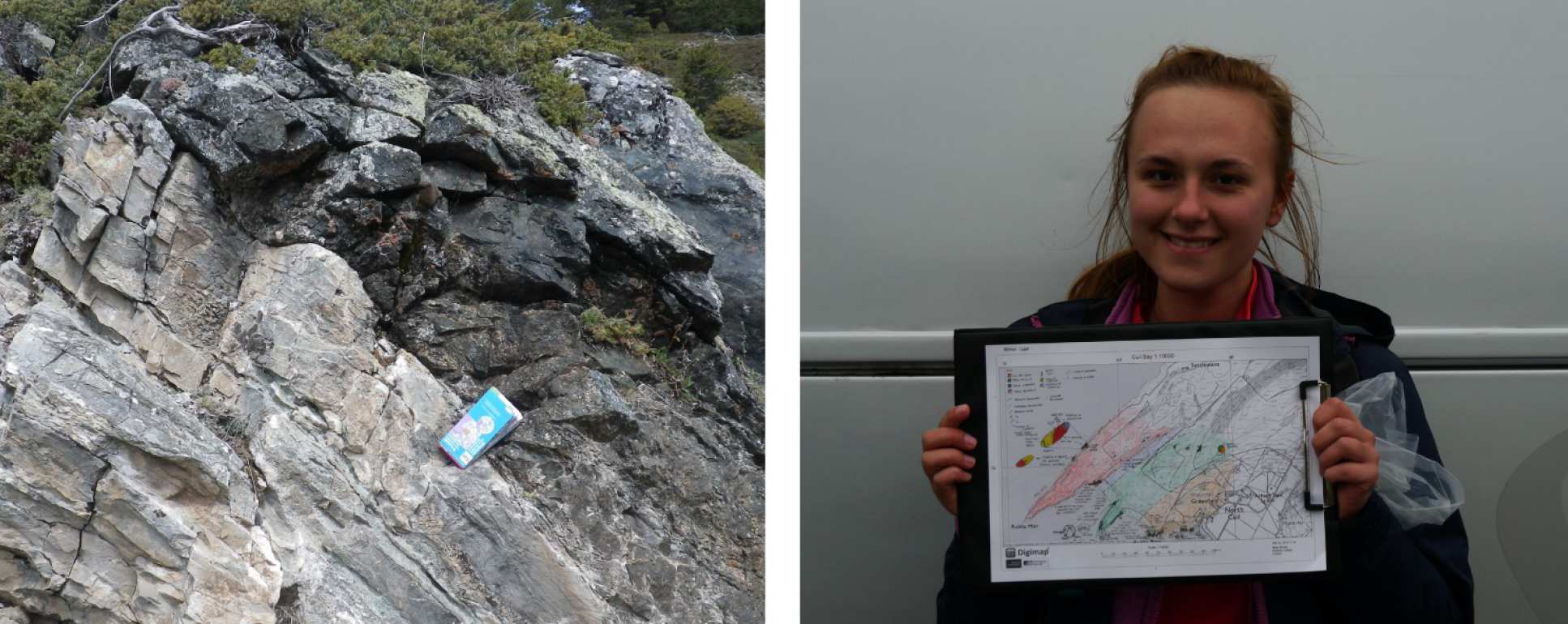Fieldwork funding
The Department of Earth Science and Engineering pays for all taught coursework (transport, accommodation, food on catered trips) and provides essential field equipment and safety equipment at no cost (compass clinometer, hammer, hand lens, field notebooks, safety glasses and hi-vis jacket). Students are asked to provide their own personal field gear (e.g. boots, waterproof jacket and trousers, day backpack); the department has a discount arrangement with an outdoor clothing provider to help ease these costs. Additional financial support is available to help any students experiencing financial difficulties.
Main field courses:
Year 1
Almeria, Spain (all degree schemes)
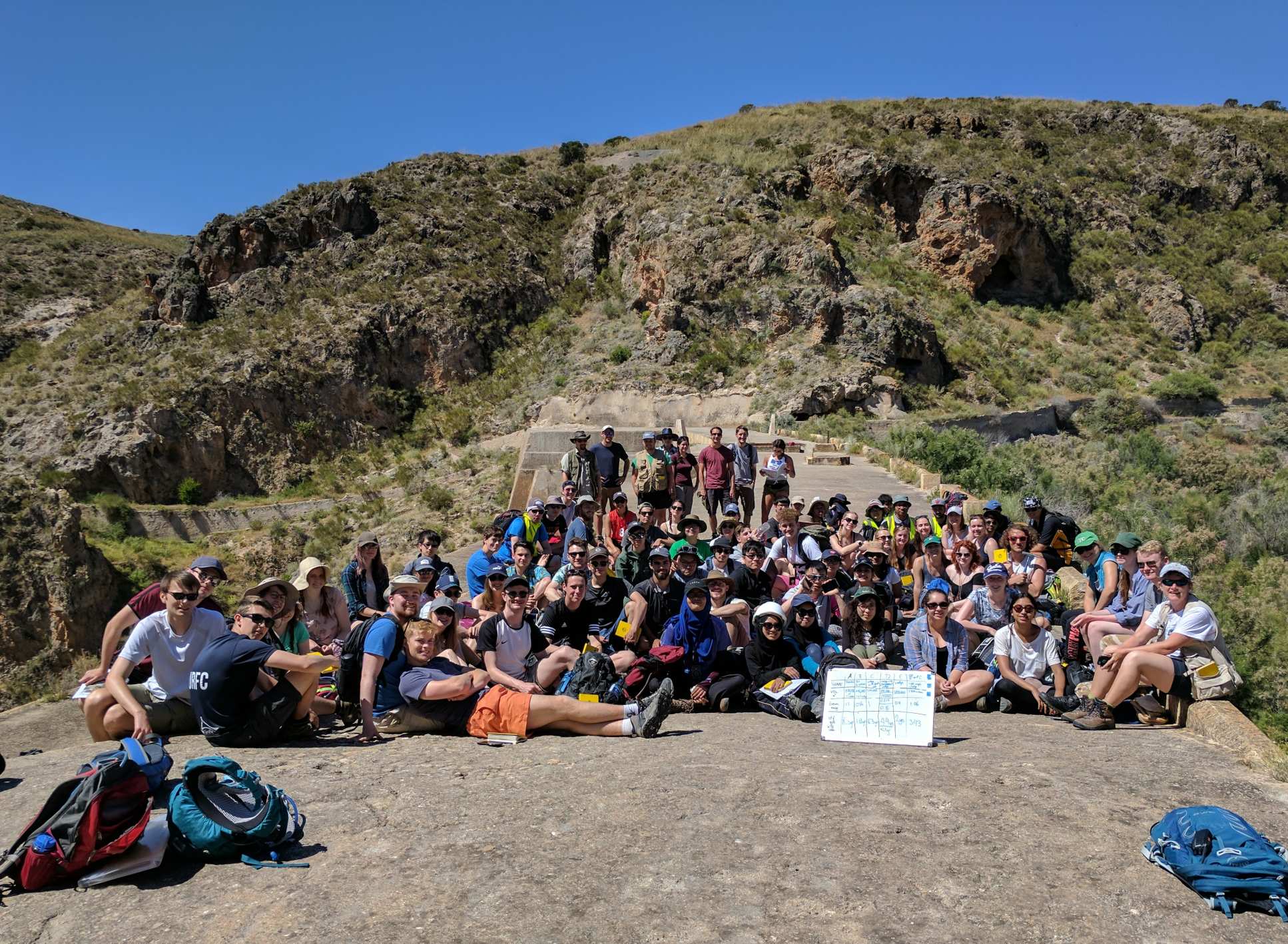
The course provides comprehensive introductory training in all aspects of geological fieldwork, including rock and mineral identification, structural measurement and interpretation, igneous, sedimentary and metamorphic processes. For students on geologically-biased degrees, this is supplemented by an introduction to geological mapping. The course takes place in Almeria Province, southeastern Spain, in May.
Year 2
Pyrenees, Spain (Geology, and an option for Earth and Planetary Science)

This 10 day fieldtrip focuses on the spectacular structural and sedimentary geology of the Spanish Pyrenees. We spend the first part of the trip looking at regional-scale thrust faults and basins in Catalonia, which formed during the building of the Pyrenean mountains 40-50 million years ago. The second part of the trip looks at the sedimentology and complex deformation history of the area around the town of Ainsa in neighbouring Aragon. This trip is designed to show how mountain building, erosion and deposition shape the geology we see around us, and trains students to 'read' the geological history of a region from structural and sedimentological observations.
NW Highlands, Scotland (Geology, and an option for Earth and Planetary Science)
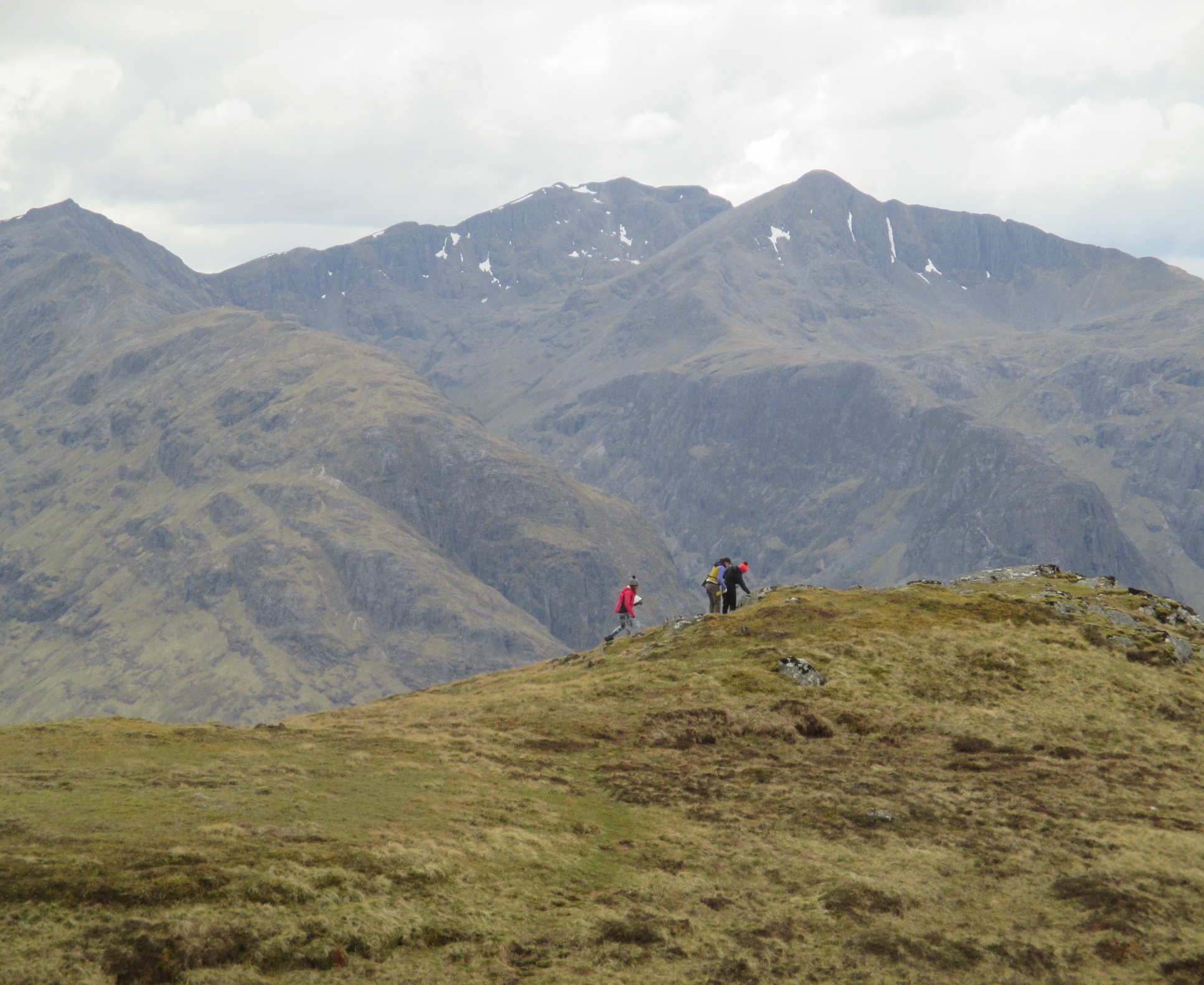 Over two weeks students spend time studying the metamorphic, igneous and structural process of the Caledonian mountain belt of Scotland. Throughout the trip there is a strong emphasis on developing mapping skills in preparation for their independent mapping project which follows after the trip. Students map a variety of rock types and structures and learn to employ the appropriate techniques in different situations.
Over two weeks students spend time studying the metamorphic, igneous and structural process of the Caledonian mountain belt of Scotland. Throughout the trip there is a strong emphasis on developing mapping skills in preparation for their independent mapping project which follows after the trip. Students map a variety of rock types and structures and learn to employ the appropriate techniques in different situations.
Cyprus (Geophysics, and an option for Earth and Planetary Science)
This 10 day, geophysics-focussed field trip heads to Cyprus, during one of the more clement times of year. Here, we teach a range of near-surface geophysics field techniques (seismics, ground-penetrating radar, and electrical and magnetic methods), plus we conduct a gravity survey across the Troodos Mountains. The students also learn how to process, analyse and interpret the data they collect, acquiring a range of skills essential to every geophysicist.
Year 3
Sardinia, Italy (Geology, optional for Earth and Planetary Science)
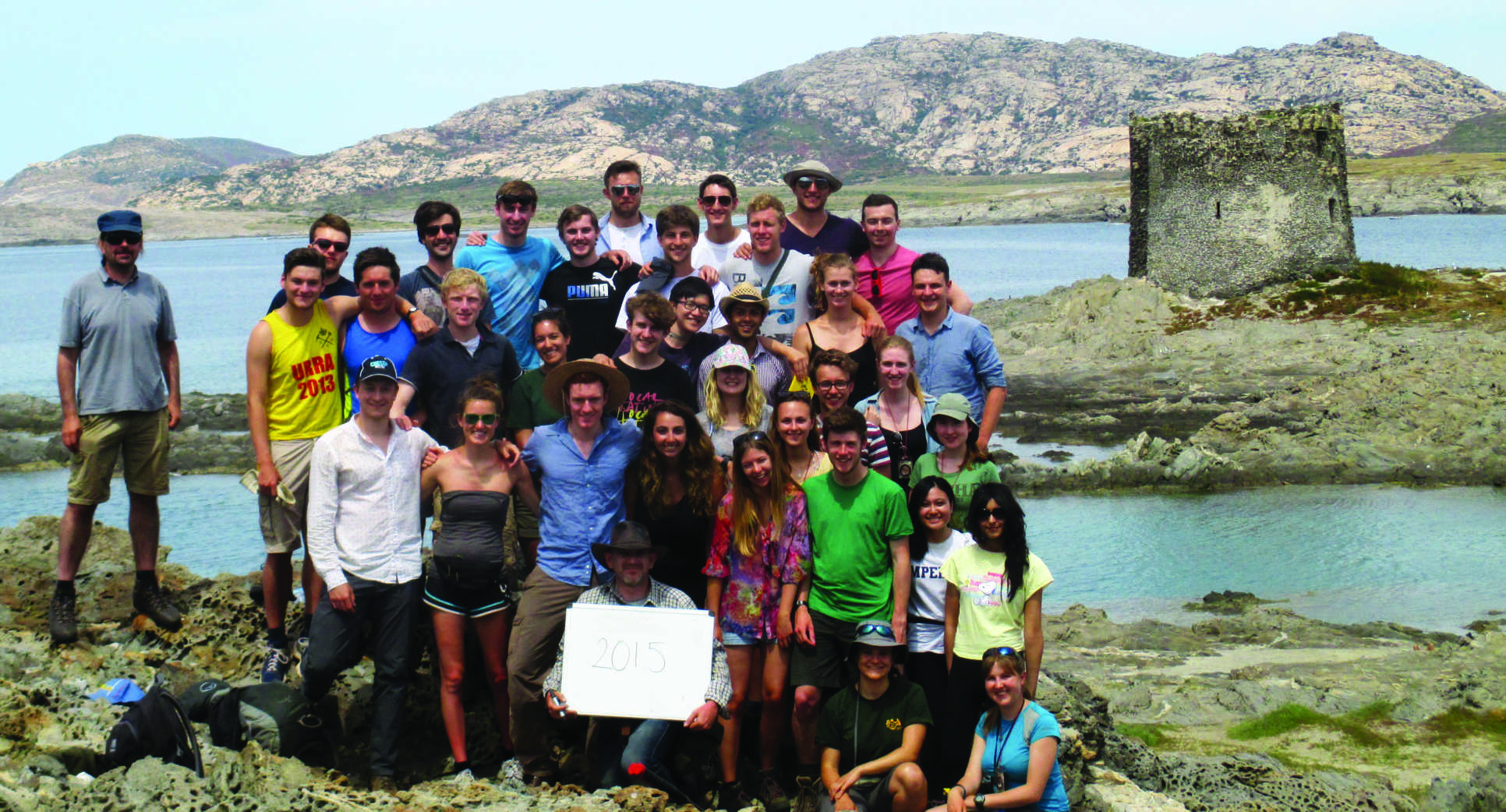
The 3rd year Sardinia fieldtrip focuses on how volcanism, metamorphism and sediments interact. The trip provides students with an introduction to the synthesis of field data to solve research problems in a unique field based research project chosen by the students themselves.
Year 4
Apennines and Elba, Italy (Geology, optional for Earth and Planetary Science)
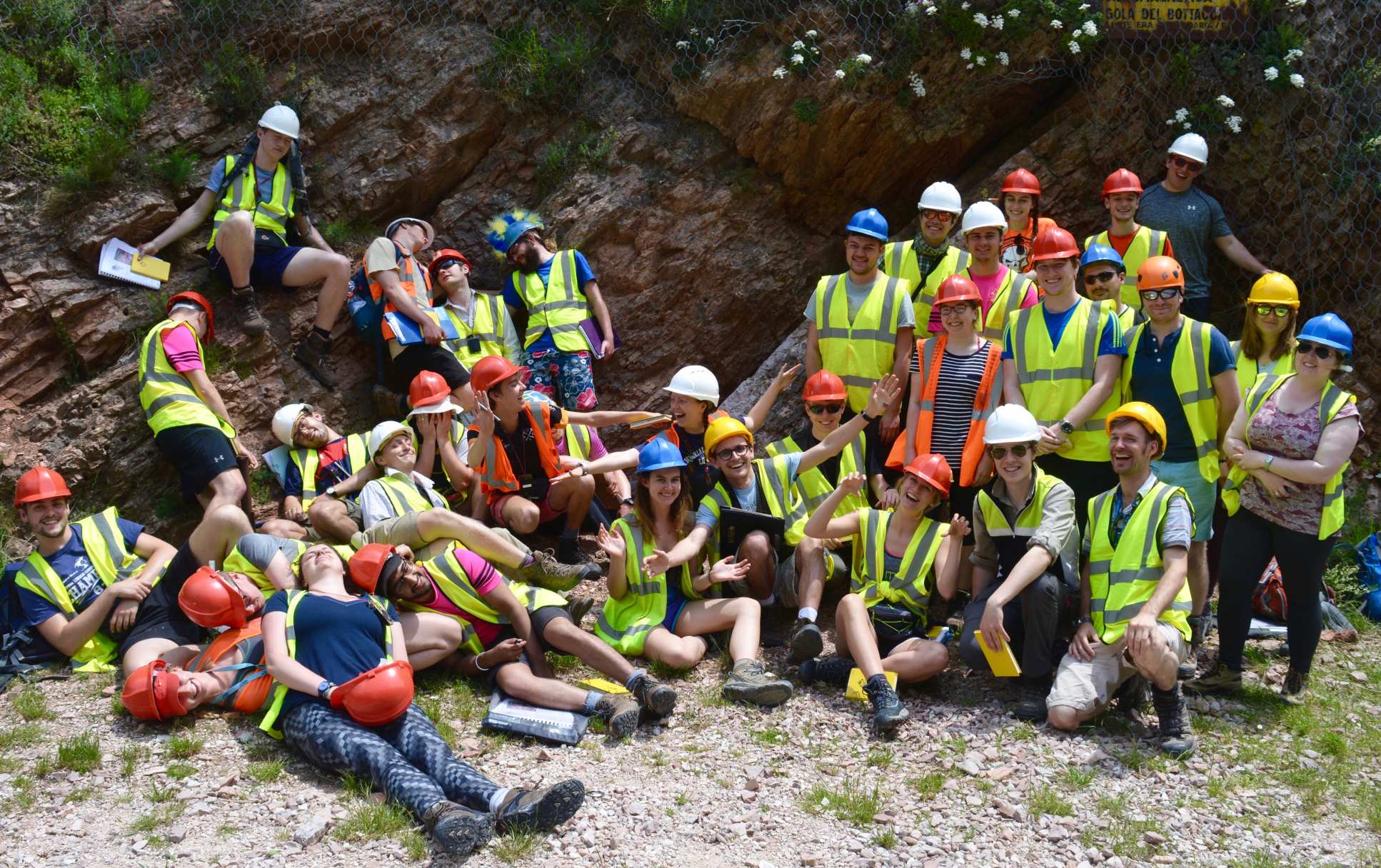
This Master's level field course focuses on advanced field skills in an area of active tectonics. The 12 day trip comprises a transect across the Italian mainland from Ancona to Tuscany, and finishes with 4 days on the Isle of Elba in the Tyrrhenian Sea. Italy is an area of real geologic interest because it is both actively extending and undergoing compression at the same time, and we visit active extensional faults that have had historically documented earthquakes. More widely, the trip integrates a broad range of hard and soft rock geology in order to build up a dynamic picture of the evolution of the western Mediterranean from the Jurassic to the present day. Students use published literature, field measurements and advanced-level techniques, developing field skills to an industry or research-level standard by the end of the course.
Independent mapping
Independent geology mapping project (Geology only)

At the end of year 2 Geology students undertake an independent mapping project. This is an opportunity to integrate the many skills and wide range of knowledge that students have learnt over the previous two years. Over 30 days students map an area of their choice, usually in Europe. By synthesising field observations students then produce a final map and report, incorporating the tectonic context of the area. Whilst this is a major piece of work, for many this project is a highlight of their degree.
Please note that all field trips referenced on this page are included in the cost of tuition, except for the fieldwork component of the independent mapping project, which Geology students undertake in the second year of their programme. Departmental hardship funds are available to provide financial assistance to students who need it, and students can often reduce the cost of this project by negotiating shorter accommodation contracts in London during this period.
